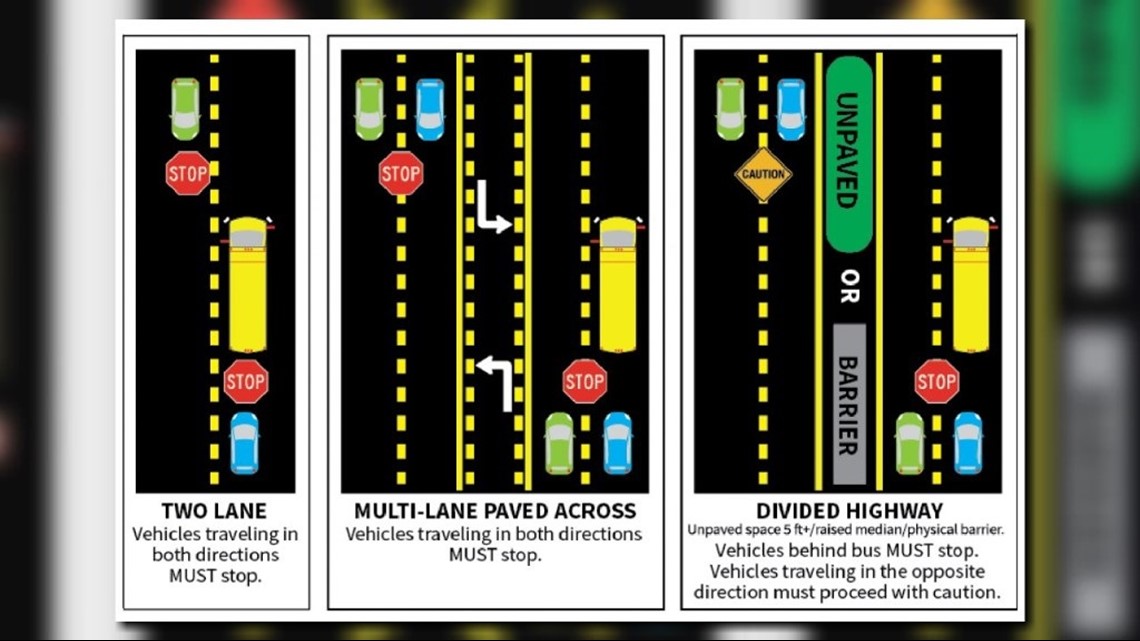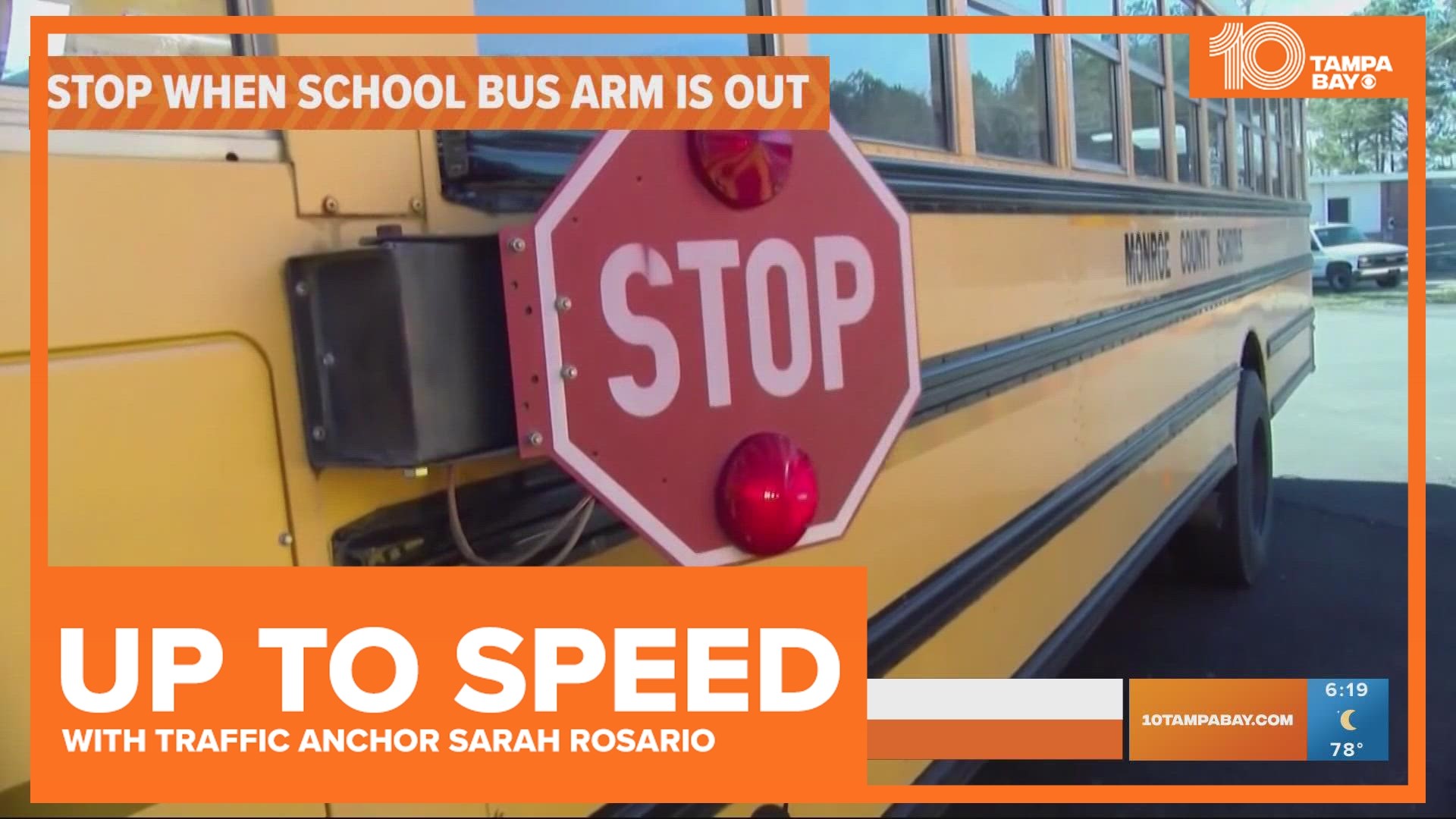TAMPA, Fla. — It's almost that time of the year when you see loads of large yellow buses take over the roads, ensuring children safely get to and from school.
But one big thing to help with the safe transportation of kids is knowing the rules behind driving alongside the school buses. Make sure to remember: when a bus stops and the red flashing lights are on, you must stop.
That's right, drivers need to come to a complete stop when the bus is stopped letting children off. You can't simply pass or go around the school bus, and there are consequences for people who do that.
According to Florida Highway Safety and Motor Vehicles, the penalty for failure to stop for a school bus ranges from a $100-$200 fee. If a person commits the same actions another time in five years, their driver's license will be suspended for up to a year.
"The penalty for passing a school bus on the side that children enter and exit when the school bus displays a stop signal goes from a minimum of $200 to $400 and if a second offense is committed in 5 years, the person’s license can be suspended up to 2 years," the agency explains on its website.
Drivers will also be required to complete a basic driver improvement course if convicted, and four points will be added to their driver's license.
FLHSMV lays out some tips for drivers heading into the new school year.
- Be alert and watch for children, especially near schools, bus stops, school buses and in school parking lots.
- Children on bicycles can be unpredictable and can make sudden changes in direction. Be especially careful when children are present in school zones and residential areas.
- Pay extra attention to lower speed limits in school zones.
- Watch for and obey signals from school crossing guards.
- Only drive or park in authorized areas to drop off or pick up children at school.
- Motorists are required to stop when approaching a school bus that is stopped with its red lights flashing and STOP arms extended.
In Florida, if you’re driving on a two-lane road when the stop arm is out, drivers in both directions have to stop until all children are clear of the road and the bus stop sign is back in.
If the road you’re driving on has several lanes and is only divided by a paved median, drivers in both directions have to stop. But if the highway is divided by a raised barrier or a median at least five feet wide, you don’t have to stop if you’re moving in the opposite direction of the bus.
Painted lines or pavement markings are not considered barriers. If you’re moving in the same direction as the bus, you always have to stop.


FLHSMV breaks down some school bus safety tips for parents and children as well:
- Arrive at the bus stop with about five minutes before the bus is scheduled to arrive.
- At bus stops, children should wait in a safe place away from the road. Never sit on the roadway or curb while waiting for your bus.
- Make sure your children know their bus driver’s name and bus number.
- Tell children to never speak to strangers at the bus stop or get into the car with a stranger. Children should tell parents, the bus driver and a teacher at school if a stranger tries to talk to them or pick them up.
- Children should never walk behind a bus and should stay away from bus wheels at all times. When the bus stops, children should wait for the driver’s signal that it is safe to cross the road or board the bus.
For more tips and information about school bus safety, click here.

